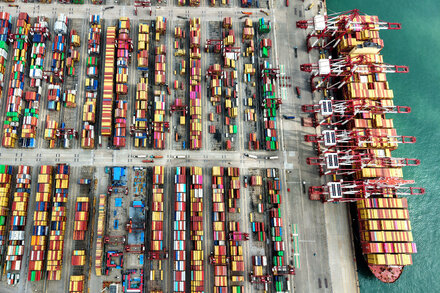
A fragile period of détente between the United States and China has been shattered by a fresh wave of economic and diplomatic maneuvers, signaling a sharp return to confrontation. The latest escalation sees the administration of President Donald J. Trump responding forcefully to what it characterizes as aggressive Chinese trade practices, effectively ending a recent period of relative calm in the bilateral relationship.
The renewed tensions began with a series of actions from Beijing, including the implementation of new industrial policies perceived by Washington as designed to heavily subsidize domestic industries and restrict market access for foreign competitors. Additionally, China reportedly expanded export controls on critical raw materials and components, sparking concerns about global supply chain stability.
“These actions represent a clear attempt to distort global markets and undermine fair competition, threatening the economic security of American industries and workers,” a senior U.S. Commerce Department official stated, speaking on background to discuss the internal deliberations.
In response, President Trump, known for his assertive trade posture during his previous term, swiftly announced the reintroduction of significant tariffs on a broad range of Chinese goods and hinted at the potential for even wider trade barriers. Sources close to the administration indicate that the new tariffs could initially impact over $300 billion in annual trade, with further punitive measures under consideration.
“We will not stand idly by while American industries are undercut and intellectual property is threatened,” President Trump reportedly declared during an internal briefing, according to an aide. “We will always prioritize American jobs and economic security, and we expect a level playing field.”
The sudden re-escalation abruptly ends a period of comparative calm that had characterized U.S.-China relations for much of the past year. Following intense diplomatic efforts and a shared recognition of global economic vulnerabilities, both nations had appeared to be pursuing a path of de-escalation, focusing on dialogue over direct trade confrontation. This “thaw” had fostered cautious optimism among businesses and allies hoping for greater predictability in the bilateral relationship.
Beijing has yet to issue a formal comprehensive response to the latest tariff threats but has consistently condemned what it labels “unilateral protectionist measures.” Analysts suggest that China is likely to retaliate, potentially through counter-tariffs, restrictions on U.S. businesses operating within China, or increased scrutiny of existing supply chains. Global markets have reacted with immediate volatility, reflecting widespread concerns over a renewed trade war’s potential impact on supply chains, inflation, and global economic growth.
Trade experts warn that a protracted dispute could have severe ramifications for international commerce and geopolitical stability. Dr. Eleanor Vance, a senior fellow at the Council on Foreign Relations, commented, “This represents a significant setback for multilateral trade principles and risks fragmenting global economic systems. Both sides appear intent on asserting their national interests, potentially at great cost to global cooperation and stability.”
Source: Read the original article here.





